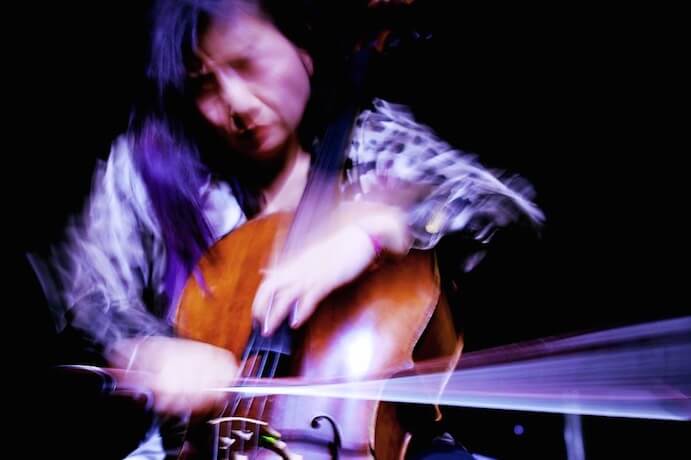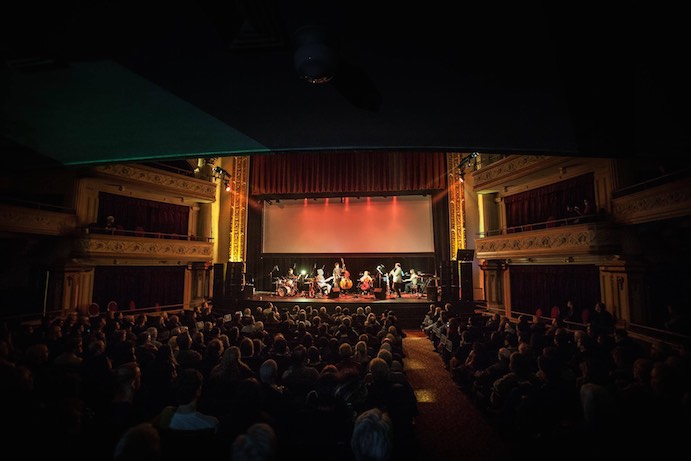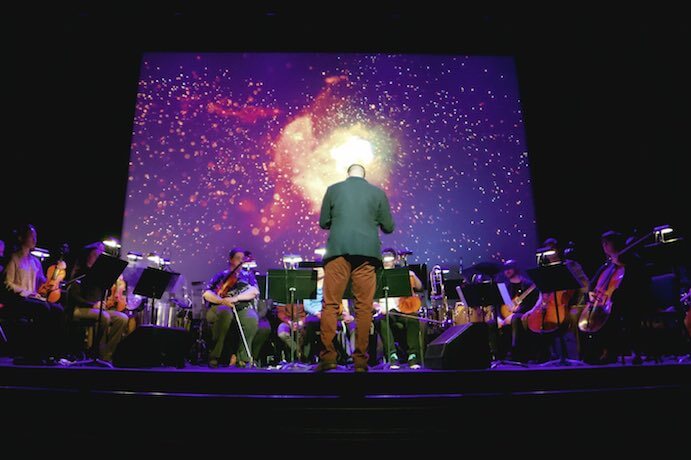From March 22 to March 25, 2018, Knoxville, Tennessee hosted another iteration of the Big Ears Festival. Big Ears is uniquely programmed its Founder and Artistic Director Ashley Capps, whose sense of diversity and avant-garde is occasionally poignant, but as is the case with the 2018 festival, sometimes leaves us wondering who it’s all for.
In contrast to I CARE IF YOU LISTEN editor Amanda Cook’s experience at the Borealis Festival this year, Big Ears 2018 seemed to embrace a very specific definition of diversity in programming. While many of the over 100 unique performances over the festival’s four days were musically diverse, there was glaring disparity in performers and composers of color and/or non-men. As a seeming result, the audience of Big Ears 2018 was overwhelmingly older and white, notably more so than in years previous. Striving for a wide range of avant-garde performances is fantastic; in the future, Big Ears should also strive to program for a wider, more inclusive audience.
That said, many of the performances at Big Ears 2018 were exceptional.
On the festival’s first afternoon, members of the International Contemporary Ensemble performed program of Anna Thorvaldsdottir’s Trajectories, Transitions, and In the Light of Air at the newly-built Mill and Mine. The large venue has a stage, but the members of ICE were arranged, facing each other, in a circle in the middle of the hardwood floor. As the audience filed in, they sat a little voyeuristically, but at a polite distance on the floor surrounding the ensemble. Unfamiliar and challenging music in intimate settings is one of the experiential trademarks of Big Ears, and this show was a loving portrait of that. ICE played Thorvaldsdottir’s pieces with both fervor and sensitivity, traveling through a gamut of timbres and experimental techniques (like playing harp and piano strings with something that looked like kitchen twine) and in particular, transporting their listeners to the windy, Icelandic tundra in In the Light of Air. Without chairs or programs, the audience tended to get a bit fidgety during the more drone-oriented passages but largely spent the performance transfixed on the ICE musicians and their masterful performance.

Okkyung Lee at Big Ears 2018–Photo by Johnson Giles
Later, the Mill and Mine hosted cellist Okkyung Lee for a short program of her solo works. Lee took the stage and played a few pieces to a audience comprised of some fans of hers and some fans of Godspeed You! Black Emperor, set to play the venue immediately after. Though some audience members likely did not know what to expect, by the end of Lee’s set, they were pretty clearly newly-converted fans. Lee’s pieces (unnamed in the Big Ears literature) were exciting and boundary-pushing: she played like a punk guitarist, manipulating the cello into growls, squeals, and white noise, rocking back and forth with her instrument. It was as if she was playing for only for herself, and we were lucky enough to stand and look on. Some moments sounded like a panic attack, while others sounded eerie and almost alien, oscillating between noise and melody, both linear and spiraling.
At noon on Friday, March 23, the Bang on a Can All-Stars played selections from their Field Recordings at the Bijou Theater. The historic Bijou, former-brothel-turned-performing-arts-venue, seats a few hundred patrons and for this performance was almost at capacity. The program featured compositions and audio and/or video composed by Caroline Shaw, Nick Zammuto, Julia Wolfe, David Lang, Michael Gordon, Todd Reynolds, and others. Favorites were Nick Zammuto’s piece Real Beauty Turns and Caroline Shaw’s piece Really Craft When You. In Real Beauty Turns, the All-Stars played along with a video and recording of dated infomercials for beauty products showing some really uncomfortable before-and-after photos. Very 80s, such fluffy bangs. The piece begins in a major tonality, in common time, and develops to almost dizzying–a reference to the Beauty Turns?–passages of motion quick, scalular, and more complicated rhythmic layers, before reconciling to the original motif. The piece is light and humorous with a shadow of underlying discomfort.
In Really Craft When You, Shaw composed a densely-textured chamber piece over old recorded interviews of southern women who make quilts. Each instrument plays a solo passage while the recorded women explain what it’s like to make a quilt, and the trials and tribulations. At one point, about fabric choice, a woman explains “It doesn’t harmonize,” and each instrument plays its individual passage simultaneously, eventually giving way to wholesome, chordal movement–almost like a hymn. Really Craft When You feels like an earnest tribute to Shaw’s compositional process, and Bang on a Can All Stars give it tender breath, clearly appreciated by the Big Ears audience.

Bang on a Can All-Stars at Big Ears 2018–Photo by Cora Wagoner Photography
Friday also saw another unique kind of live music event: the live scoring of the film Brimstone and Glory, directed by Viktor Jakovlesky and scored by Dan Romer and Benh Zeitlin. Big Ears favorite Nief-Norf–Knoxville’s own contemporary percussion ensemble–and Wordless Music Orchestra presented the score at the Tennessee Theater, a classic, large-scale hall. As the evocative score is so percussion-forward, Nief-Norf was heavily featured. It also allowed for members of Nief-Norf to be creative with their instrumentation; playing with the softening or scaffolding, some of the more unyielding moments of the original score proved their choices to be effective. The score’s austerity allowed Nief-Norf to be co-stars with the film itself, though they were situated behind the orchestra. As Nief-Norf are exciting to watch, a better view of those musicians would have been preferred.
A hallmark of Big Ears is to expect surprise: it sometimes comes in an artists’ one-time-only collaboration, or hearing vastly different kinds of music in the same hour, or experiencing the versatility of the artists themselves. Or perhaps most often, festival goers are surprised at their own responses to the festival’s unique patchwork of musical offerings.





















